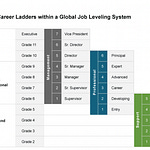Jason and Eiso share the frameworks that have helped them navigate big and small decisions through the years and look back at how key decision-making moments shaped how they operate as leaders today.
Making good decisions is one of the pillars of exceptional leadership and a practice that can make or break an organization at any stage. Through company politics, difficult conversations, promoting employees, and raising equity, there are several approaches to staying grounded and keeping your team in sync as you navigate the turbulent tides of organizational change.
Here are a few of our favorite moments from the conversation
If I'm giving any advice to engineering leaders, there's a two-fold thing, which is: you've got to think of yourself as your department and your department's efficiencies. But if I were to flip it around I'd say: think of yourself as a functional leader second, and an executive first.
If you're thinking about yourself as an executive first, you're thinking about a business, you're thinking about the new CAC multiples, you're thinking about sales efficiencies, you're thinking about all the stuff that's going on in finance. Not that you have to actually know those things, but you're interested when the CFO is talking at the LT staff meeting or the exec staff meeting about what's happening in procurement. You're still interested. You don't tune out and just think about "we need to start talking about database tuning".
The first time someone gets promoted or a raise or more equity or they’re "teacher's pet", you're starting to enter political land. So you've gotta be a lot more explicit about communication to root out politics.
I speak to hundreds of engineering leaders and I come away from it that many people, humans in general, but I'm very much exposed to those that work in software engineering, are great kind hearted people who are passionate about technology. That's why they got into the field.
Don't assume that anyone is going to be looking out for you. Don't assume that anyone's going to look out for your employees. Don't assume anyone's going to be actively seeking to give away more of the company to those people. You have to be that champion for your people and you. You have a boss who is not going to give you more equity.
💡 Topic Explainers
🛠 The Eisenhower Matrix
The Eisenhower Matrix is a decision-making tool created by Dwight D. Eisenhower, who believed that there were two aspects that define decisions: important/non-important or urgent/non-urgent. Adopting the practice of using this matrix, or variations of it, for work decisions is a great way to avoid bad decisions and avoid wasting time.
The way that Eiso uses the Eisenhower matrix is a little different. Instead of categorizing decisions as urgent vs important, he categorizes them on reversibility vs impact.
Eiso's Matrix looks like this:
If you want to learn more about the original Eisenhower matrix, we recommend this article by Farnham Street.
🛠 People vs Events vs Ideas
"Great minds discuss ideas. Average minds discuss events. Small minds discuss people." - Eleonor Roosevelt
Jason and Eiso are both familiar with the notion of "People, Events, and Ideas", and how observing which of the three a company or group of people talk about the most can be very telling of the company culture at hand.
Ideally, you want to be in a room where people are discussing "Ideas". A company where "People" is the main topic of discussion probably has serious cultural issues that need to be fixed, as it likely operates on politics, not the brilliance and merit of its employees.
Jason's proposal for changing the conversation from "People" to "Ideas" is to slowly move it through "Events", using the "frog in a boiling pot" method to change behaviors.
🛠 The Monkey and Banana Experiment
In 1966 at the University of Wisconsin-Madison an experiment was staged involving five monkeys in a large cage. In the middle of the cage, a ladder was placed leading up to some hanging bananas. As the experiment began, one monkey spotted the food and began climbing the ladder. As he did, however, the researcher, Gordon Stephenson, sprayed him with a stream of cold water. He then turned to all the other monkeys in the cage and sprayed each and every one of them as well.
The Monkeys quickly learned that climbing the ladder would lead to them getting sprayed with freezing water, so, not only did they stop going up the ladder, they would prevent new monkeys who came into the cage from doing it as well.
Ultimately, as monkeys who had not been conditioned were introduced into the cage, when the initial 5 monkeys were no longer there, the monkeys would not climb up the ladder to get the banana, even if they didn't understand why. source: Fahrenheit Advisors
The key finding is that we often adopt behaviors simply because we see our peers behaving in those ways, and we don't stop to ask why or where those behaviors come from.
This is called Social Conformity, and you can see how this happens with humans in the Asch conformity experiment.
Developing Leadership is powered by Athenian. We are introducing a winning approach to engineering metrics that can help you empower your teams to autonomously improve. If you want to learn more, go to athenian.com













